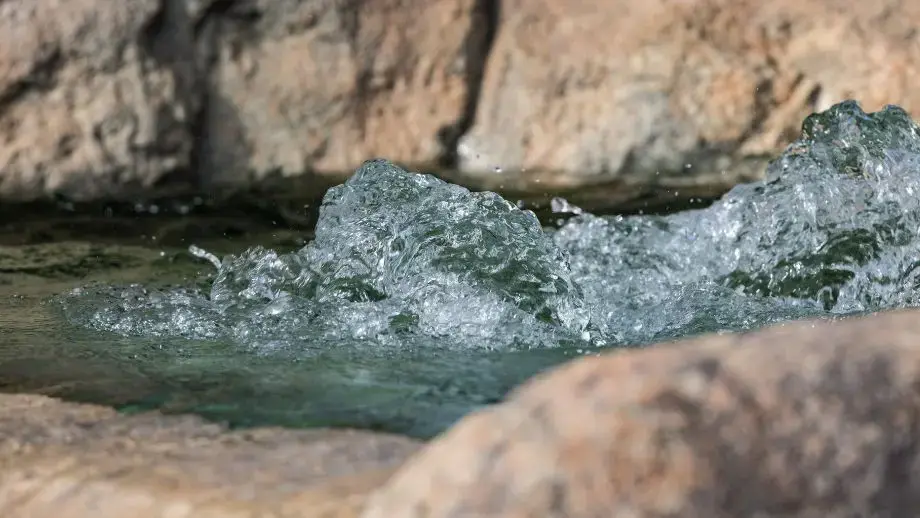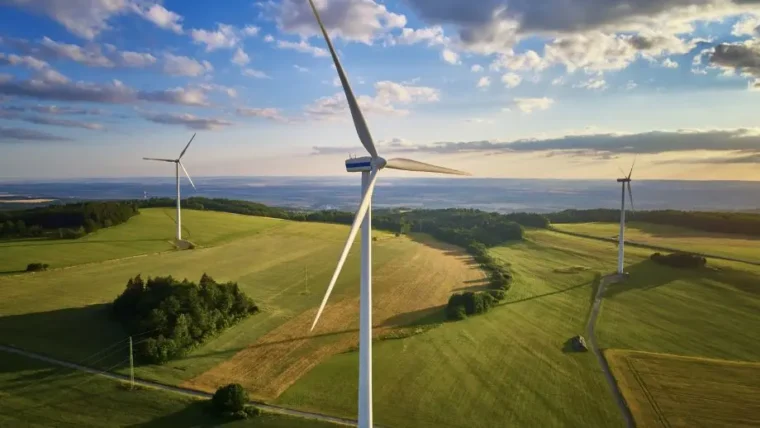Fortnightly Bulletin – 12th August 2024
13 August 2024

Guidance
Treating pesticide washing using lined biobeds and biofilters: RPS 140
The Environment Agency (EA) have published a Regulatory Position Statement (RPS) on when you treat diluted non-hazardous pesticide washing using lined biobeds or above ground biofilters if the treatment site is within either of the following:
- A groundwater Source Protection Zone one (SPZ1),
- 250 metres of a borehole used to supply water for domestic or food production purposes.
The EA will not normally take enforcement action against you if you do not comply with this legal requirement provided that:
- your activity meets the description set out in the RPS,
- you comply with the conditions set out in the RPS.
In addition the activity must not cause (or be likely to cause) pollution of the environment or harm to human health, and must not:
- cause a risk to water, air, soil, plants or animals,
- cause a nuisance through noise or odours,
- adversely affect the countryside or places of special interest.
Conditions you must comply with.
You must only treat:
- diluted non-hazardous pesticides generated from washing pesticide equipment such as sprayers,
- diluted pesticide washing at the place of production,
- diluted non-hazardous pesticide washings in a lined biobed or above ground biofilter in a secure place that is not within ten metres of a watercourse.
You must not store or treat more than 15,000 litres of diluted non-hazardous pesticide washings in the lined biobed or above ground biofilter in a 12-month period.
The EA intends to review this RPS by the 30th of June 2027.
Source: Gov.UK
For the full guidance, click here.
Storing waste left by former tenants in empty properties: RPS 171
The EA updated this RPS guidance document on 29th of July 2024 and have extended the review date to the 30th of June 2027.
Source: Gov.UK
For the full guidance, click here.
Heat treating waste plastics for reuse: RPS 112
The EA updated this RPS guidance document on 7th of August 2024 and have extended the review date to the 31st of December 2025.
Source: Gov.UK
For the full guidance, click here
Groundwater Source Protection Zones (SPZs)
The EA have added extra details to the definition of SPZ1 and SPZ2 to make it clear how the boundaries are defined.
Inner Zone – SPZ1
A groundwater SPZ 1 is in the area immediately around an abstraction point for domestic supply or for food production purposed. Groundwater in a SPZ1 is most vulnerable to pollution given the close proximity of the abstraction point and the water’s intended use for human consumption. It is defined within the Environmental Permitting (England and Wales) Regulations 2016 as one of the following.
- The area within 50 metres of a point where the groundwater is abstracted for domestic supply or food production purposes.
- The area where it takes groundwater that is intended to be used to supply water for domestic or food production purposes up to 50 days to travel to the groundwater abstraction point.
For any given abstraction point, whichever area is largest applies.
Outer zone – SPZ2
A groundwater SPZ2 is the area around an abstraction point for domestic supply or for food production purposes that meets one of the following definitions.
- The area within 250 metres of the abstraction point if the maximum allowable annual volume, divided by 365, is less than 2,000 cubic metres per day. This is when this is authorised by either:
- an abstraction licence under section 24 of the Water Resources Act 1991,
- the right to abstract small quantities under section 27 of the Water Resources Act 1991
- The area within 500 metres of the abstraction point if the maximum allowable annual volume, divided by 365, is equal to or greater than 2,000 cubic metres per day. This is when this is authorised by an abstraction licence under section 24 of the Water Resources Act 1991.
- The area where it takes groundwater that is used to supply water for domestic or food production purposes up to 400 days to travel to the groundwater abstraction point.
For any given abstraction point, whichever area is largest applies.
Source : Gov.UK
For the full guidance, click here
Protect groundwater and prevent groundwater pollution
The EA have updated the guidance to clarify the definition of groundwater – water stored in geological strata (for example, in rocks) below the water table (groundwater).
Source: Gov.UK
For the full guidance, click here
Packaging data: what to collect for extended producer responsibility
The EA have made several small changes to the guidance which was originally published on the 24th of November 2022. The start date for reporting on the 1st of January to the 30th of June period has been updated from the 1st of July to the 9th of August 2024.
Source: Gov.uk
For the full guidance, click here.
Articles of Interest
Is carbon capture an efficient way to tackle carbon dioxide (CO2)?
The world’s largest Direct Air Capture (DAC) facility is found 30 kilometres southwest of Iceland’s capital, Reykjavik. The idea is to reverse emissions that have been pumped into the atmosphere.
The DAC facility is called ‘Mammoth’ and has been developed by Swiss firm ‘Climeworks’. The DAC facility sucks in global-warming CO2 out of the air, then stores it deep underground where it turns into stone.
Twelve collector containers have been installed and in the coming months, 72 of them will circle the large processing hall that will enable the facility to capture 36,000 tons of CO2 every year, an amount similar to taking 8,000 petrol cars off the road.
Mr Chan says that ‘the technology relies on sucking in lots and lot of air, slowing it down so that the filters can capture it, and then venting the air back out the end.’
CO2 only makes up a tiny proportion of the atmosphere (0.04%), so capturing it requires a lot of electricity. For Mammoth that electricity comes from a neighbouring geothermal power plant, so, while operating, the plant is emissions free.
Iceland has an abundance of volcanic basalt, and this bedrock acts like a storage reservoir. When the carbon meets other elements found in the basalt, a reaction kicks off and it solidifies, locking it away as carbonate minerals.
The process is quick, claims Dr Voight enthusiastically. “We’re not talking about millions of years…Around 95% of the CO2 was mineralised within two years in the pilot project. This is incredibly fast. On geological timescales at least.”
It costs Climeworks almost $1,000 (£774) to capture and store a tonne of CO2. To make money it sells carbon offsets to clients.
DAC technology is, however, not without critics who think its over-hyped, pointing to high costs, high energy consumption and limited scale. Those critics would argue that capturing CO2 where it is emitted would be far more efficient.
Source: BBC
For the full article, click here
Morrisons raises store freezer temperatures to limit carbon emissions
Morrisons has launched a new trial to increase the temperature of some supermarket freezers by 3°C in a bid to cut carbon emissions. The move, which will not impact food safety, comes as the current -18°C guidance has not been updated since it was set out almost one hundred years ago. There are currently freezers in ten stores across the United Kingdom in the trail which has moved to -15°C, allowing Morrisons to assess the impact in the different climates and supply conditions before a potential nationwide roll out.
The cost savings from the change could push prices down for shoppers and help Morrisons to achieve its goal for net zero carbon emissions from its own operations by 2035.
Source: Grocery Gazette
For the full article, click here
Aldi to ditch plastic punnets on fruit and veg
Aldi are trialling the removal of pulp trays and punnet packaging on multiple of its fruit and vegetable products. Changes include the removal of plastic punnets from its nature’s pick cherry tomatoes in selected stores. Changes have already been made on its nature’s pick sliced mushrooms and soon to follow on its baby plum tomatoes.
If implemented across all the Aldi’s stores, the changes are expected to remove over 370 tonnes of plastic and packaging per year.
Source: Grocery Gazette
For the full article, click here
Scottish public backs circular economy transition
A public consultation on Scotland’s policies for a more sustainable use of resources has seen more than 70% of respondents back plans to reduce waste and set circular economy targets.
The draft circular economy and waste route map consultation was launched in January before the country’s Circular Economy Bill was passed into law in June.
Actions include charges for single-use disposable cups and restrictions on the destruction of unsold consumer products received support from 71% of respondents.
More than 81% of respondents also supported further actions for circularity, which included research into waste prevention and behaviour change, and support for green training opportunities.
Plans to decarbonise disposal, including minimising carbon from energy-from-waste plants and increasing the capture of landfill gas, were agreed with, or strongly agreed with, by 78% of people.
The route map also include plans to develop a statutory code of practice for household waste services by 2026, strengthen householders duty of care for waste, and a review of waste and recycling service charging.
Source: MRW
For the full article, click here.
Enforcement action
Teesside man fined for failing to clear illegal waste site
A Teesside man appeared in court in July 2024 and admitted he was in contempt of court by failing to comply with a court order to clear waste from an illegal site in Middlesborough. He was fined £2,500 and ordered to pay costs of £2,750 with the magistrates saying that his failure to clear the waste was wilful and warned he may end up in custody if he fails to clear it in the future.
In July 2023, the Teesside man who owned a company, was fined, and ordered to pay costs totalling almost £26,000. This was for operating a waste site without a permit, failing to produce waste transfer notes, and failing to comply with an Environment Agency notice to clear the site. The company pleaded guilty to operating a waste site without a permit. The director of the company was banned from being a company director for two years and ordered to clear the site of waste by the 31st of December 2023. The site has not been cleared, and the EA brought the company director back before the courts for contempt of court.
For the full article, click here.
Events
Environmental Permitting Training Course
Delivered in-house at customer sites or remotely over half a day.
EMS provide training on sites that have any type of environmental permit.
The course highlights include the following:
- Understand your permit(s)
- Know what your permit requires of you
- Tailor the course
- This course will look at your specific permit(s)
- Delivered by a consultant
- All our trainer have experience in environmental permitting.
The course topics are:
- Basics of environmental permitting
- Environmental permit requirements
- How to meet your environmental permit requirements.
Source: em-solutions.co.uk








